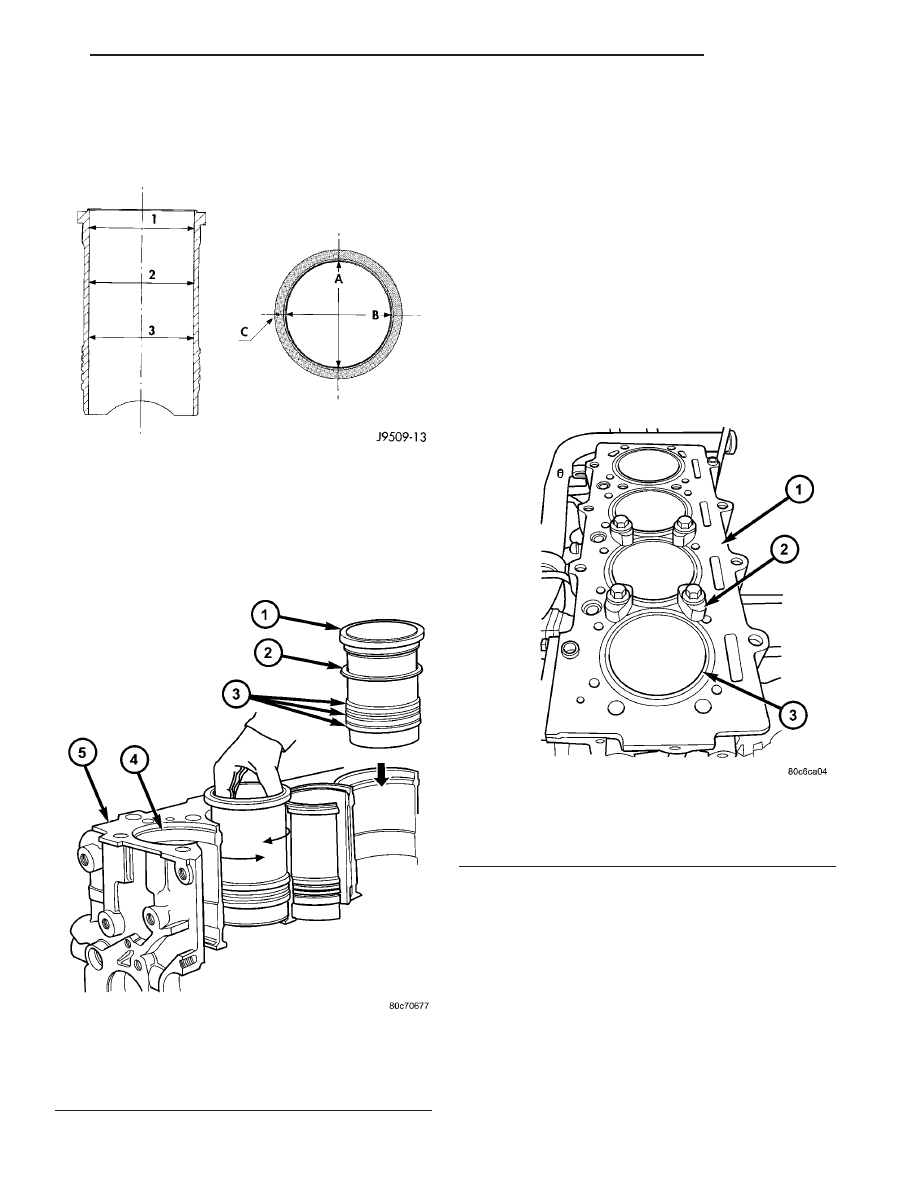Content .. 1094 1095 1096 1097 ..
Chrysler Town, Dodge Caravan. Manual - part 1096

Measure the cylinder bore at three levels in direc-
tions A and B (Fig. 43). Top measurement should be
10 mm (3/8 in.) down and bottom measurement
should be 10 mm (3/8 in.) up from the bottom bore.
INSTALLATION
(1) Carefully clean liner and engine block, and
degrease the engine block where it comes into contact
with the liners. Install the liners in the engine block
as shown, rotating them back and forth by 45° in
order to guarantee correct positioning (Fig. 44).
(2) Measure the liner recess relative to block deck
with a dial indicator mounted on a special tool
VM-1010 A. All the measurements must be taken
on high pressure pump side of engine block. .
Zero dial gauge on block deck.
(3) Move dial gauge to cylinder liner record read-
ing on dial gauge.
(4) Remove liner and special tool.
(5) Then select the correct shim thickness to give
proper protrusion (0.01 - 0.06 mm).
(6) Fit the shim and the O-rings onto the liner.
(7) Lubricate the lower liner location in the block.
(8) Fit the liners in the crankcase making sure
that the shim is positioned correctly in the seat. Lock
the liners in position using special tool (VM.1076)
and bolts (Fig. 45).
(9) Recheck the liner protrusion. It should be 0.00
- 0.05 mm.
(10) Reassemble engine.
(11) Install engine in vehicle.
Fig. 43 LINER INSPECTION
Fig. 44 LINER INSTALLATION
1 - CYLINDER LINER
2 - SHIMS
3 - O-RINGS
4 - BLOCK LEDGE
5 - ENGINE BLOCK
Fig. 45 LINER CLAMP LOCATION
1 - ENGINE BLOCK
2 - LINER RETAINER VM.1076
3 - CYLINDER LINER
RG
ENGINE
9 - 37
CYLINDER LINERS (Continued)